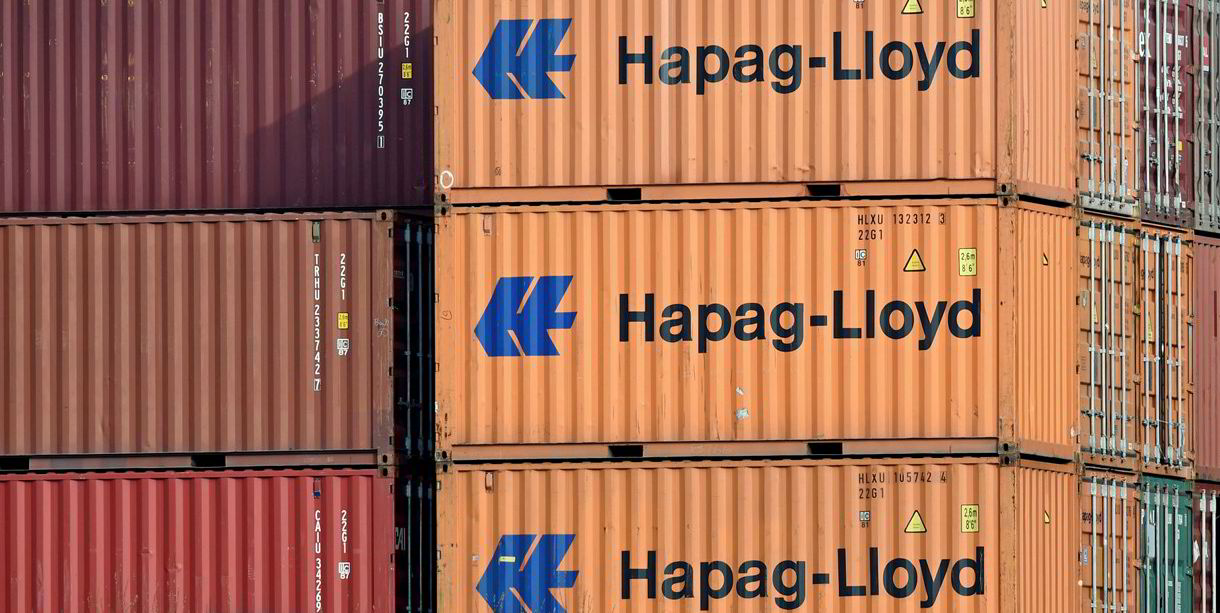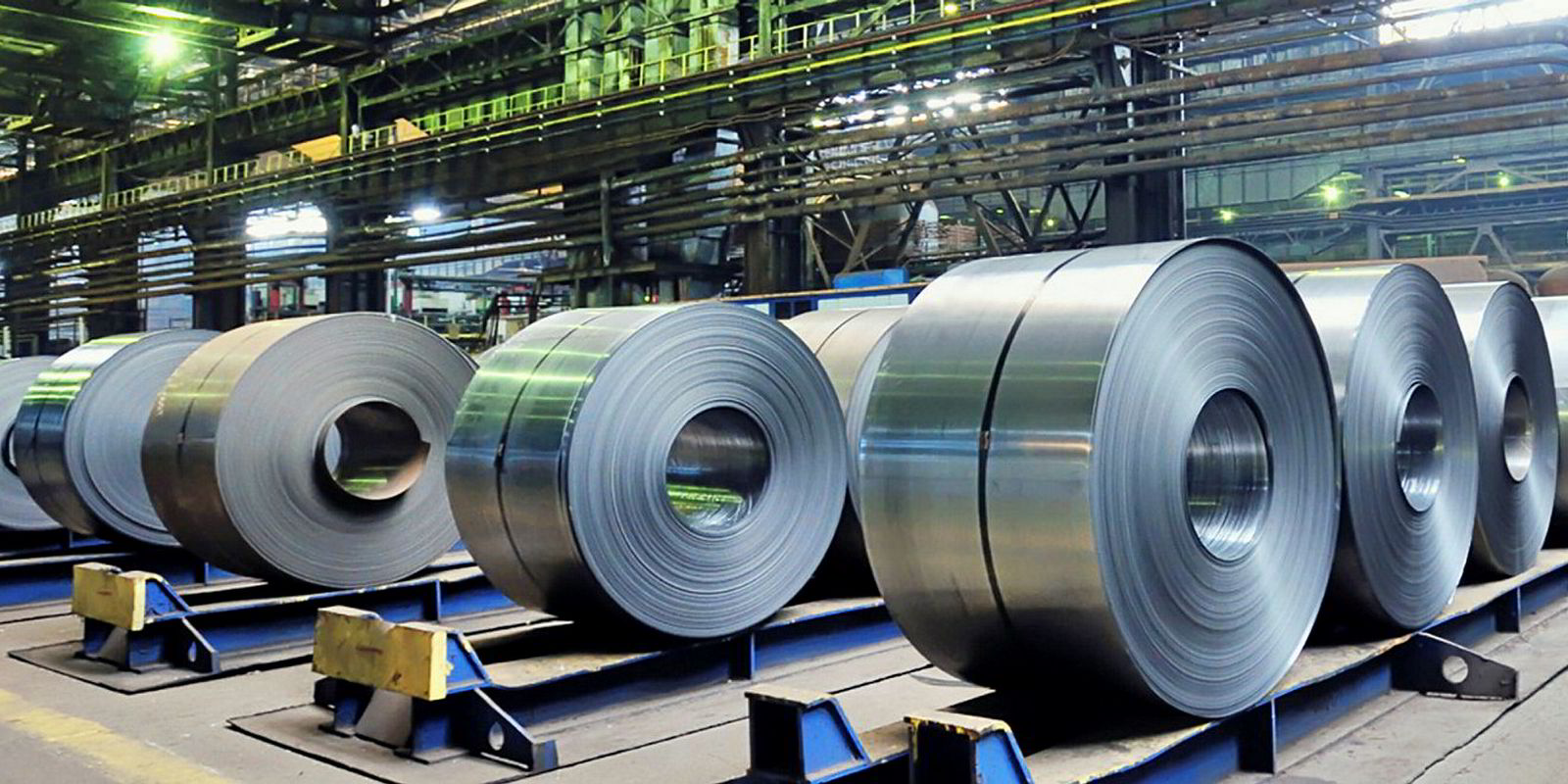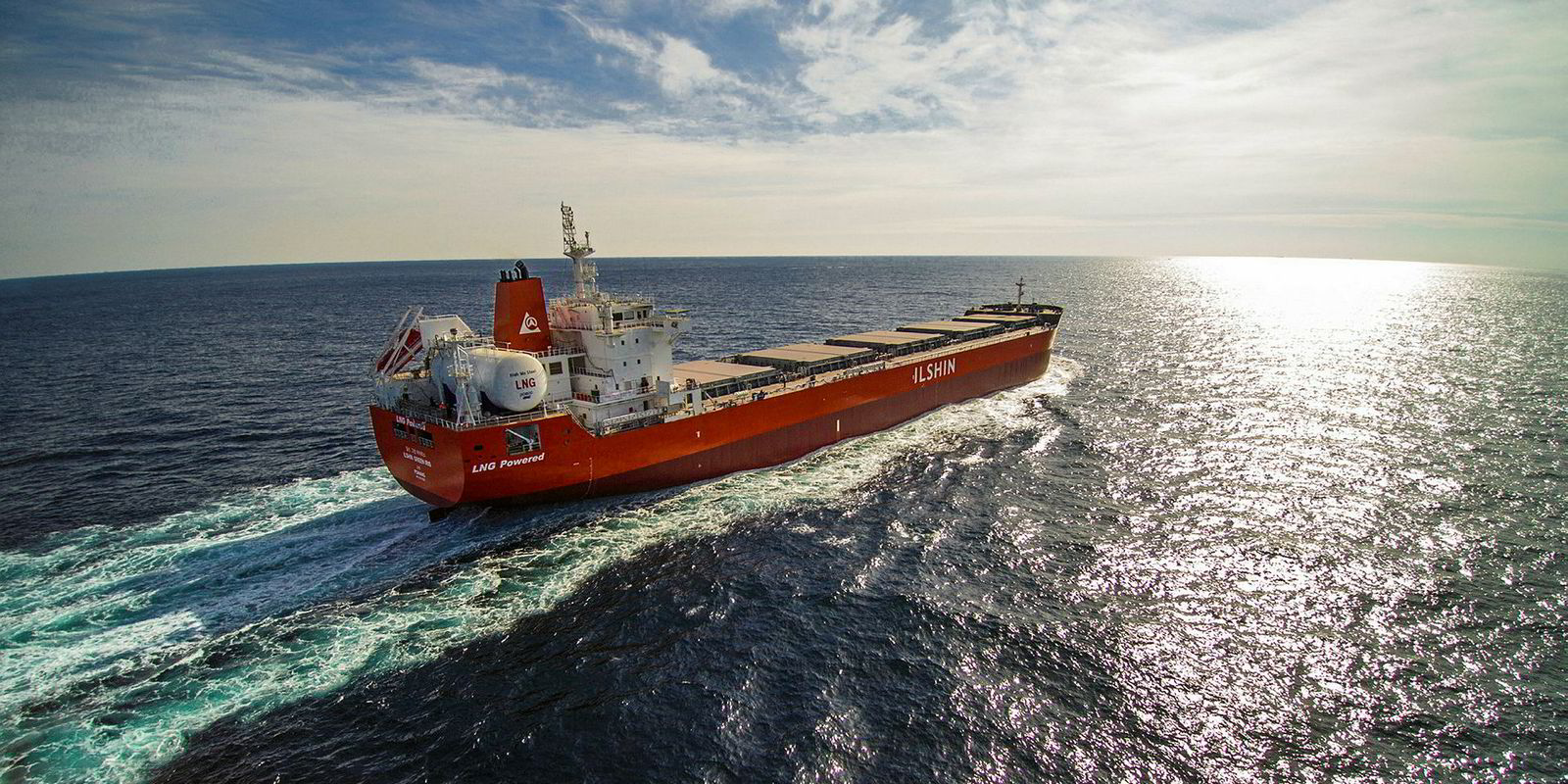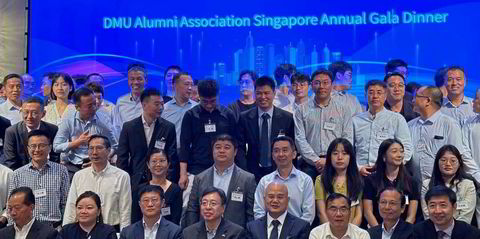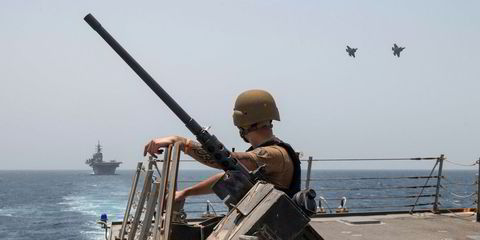Shipowner Hapag-Lloyd is poised to ink a series of up to 12 ultra-large containership newbuildings at Daewoo Shipbuilding & Marine Engineering next month, which look set to be the first built with high manganese steel bunker tanks.
Newbuilding sources said Hapag-Lloyd is due to sign contracts with DSME in December after signing a letter of intent for six firm, dual-fuelled 23,000-teu boxships that will bunker LNG and a similar number of optional vessels.
But they said the ships are set to be pioneering in their design in that they will be built with type-B integrated LNG bunker tanks of around 18,000 cbm constructed from high manganese steel.
The containership newbuildings are expected to be scheduled for delivery dates from 2023 onwards.
When contacted, Hapag-Lloyd's spokesman said the company is "still in talks" and "nothing is confirmed".
Surprise move
Hapag-Lloyd’s upcoming order is no surprise.
The German liner company came close to advancing its plans early this year before putting the newbuilding project on ice as the Covid-19 pandemic took hold.
But its decision to be a first mover on a relatively untried material for commercial LNG operations would likely raise quizzical eyebrows.
- Posco started developing the steel in 2010
- The steel contains 22.5% to 25.5% manganese
- It is capable of withstanding temperatures down to -196C
- Posco claims it is harder and has higher tensile strength than other cryogenic materials
- Technical experts say high manganese steel gives off toxic fumes during welding and can prove brittle to work with
- Posco says it is 30% cheaper than the more commonly used 9% nickel steel used for LNG tanks
- The IMO’s Maritime Safety Committee has approved interim guidelines for using high manganese steel in LNG tanks
So far, the material, which is supplied by South Korean steelmaker Posco, has only been used in one vessel — the 50,000-dwt domestic coastal trading bulker Green Iris (built 2018) — and there has been little feedback on its operation.
The choice of cryogenic high manganese steel over a membrane-type bunker tank — similar to those fitted to CMA CGM’s 23,000-teu containership newbuildings — is expected to result in cost savings.
One broker said DSME had been marketing its high manganese tank design on this supersize boxship for around $165m per vessel. He estimates the use of the new bunker tank material could stack up to a $2m to $3m saving per ship on competing designs offered by other yards.
DSME is understood to have been working for more than a year testing and working with high manganese steel.
One shipowner watching the progress of containership newbuilding enquiries said there is a trend towards this type of steel for bunker tanks for owners considering dual-fuelled vessels.
Yard fightback
The new tank offering at DSME is another example of efforts being made by South Korean shipbuilders to take on all aspects of newbuilding construction and not have to pay foreign designers and contractors for aspects of the work.
One of the key bugbears for South Korean yards has been the licence fees they pay to French LNG cargo tank containment system designer GTT on a per-ship basis.
South Korea has designed its own rival membrane system — KC-1 — but the first applications proved problematic. However, with the rise of enquiries for large LNG-fuelled vessels, where hull-integrated type-B bunker tanks are needed, shipbuilders are keen to advance their own solutions.
Talk of Hapag-Lloyd’s impending order comes in a week where the Korea Fair Trade Commission (KFTC) announced the result of its four-year investigation into GTT’s commercial practices.
The KFTC found GTT’s commercial practices, related to LNG carrier construction, broke competition regulations over the last four years and fined the French company about $11.3m.
GTT said it would appeal the decision.
